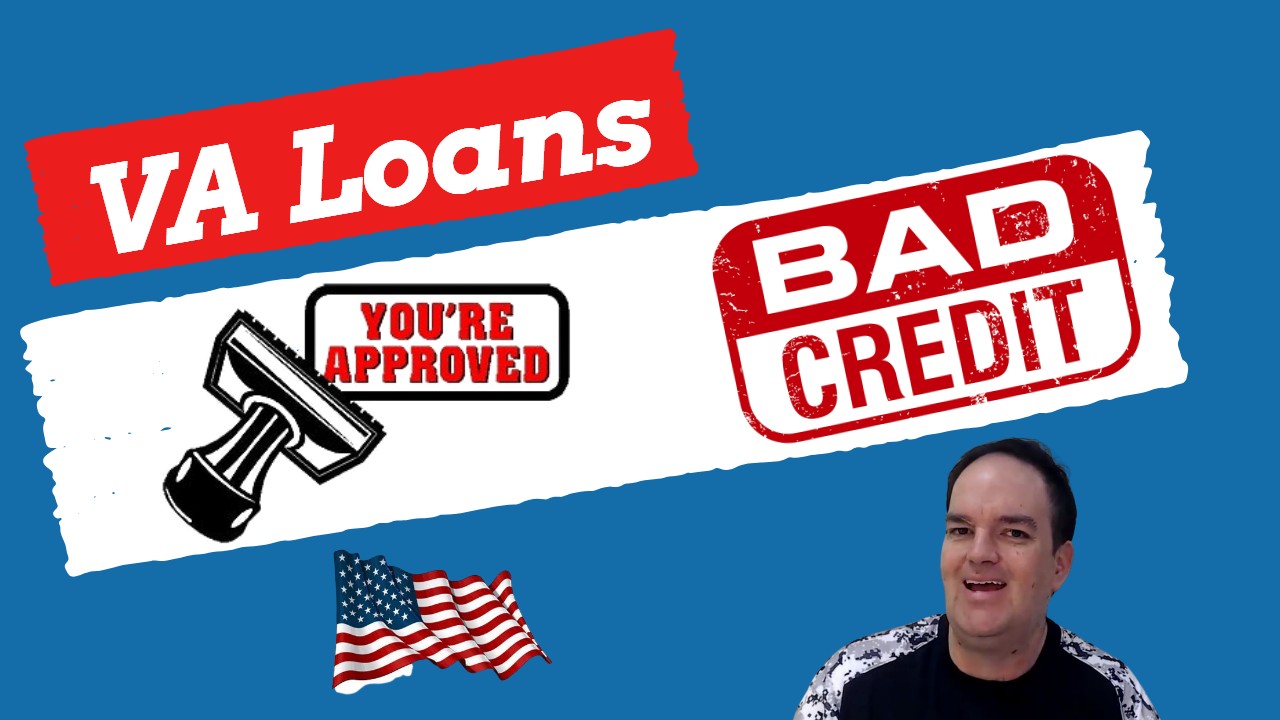

Finance
How To Reduce Interest Rate On Student Loans
Published: January 19, 2024
Learn effective strategies to lower the interest rate on your student loans and manage your finances better. Get expert advice on reducing financial burden and improving loan repayment options.
(Many of the links in this article redirect to a specific reviewed product. Your purchase of these products through affiliate links helps to generate commission for LiveWell, at no extra cost. Learn more)
Table of Contents
- Introduction
- Understanding Student Loan Interest Rates
- Evaluating Existing Student Loans
- Exploring Options for Reducing Interest Rates
- Consolidating Student Loans
- Refinancing Student Loans
- Negotiating with Lenders
- Seeking Loan Forgiveness or Discharge Programs
- Tips for Effective Interest Rate Reduction
- Conclusion
Introduction
Student loans can be a significant burden for many individuals, especially when the interest rates are high. The interest accrued on student loans can add thousands of dollars to the overall amount that needs to be repaid, making it harder to achieve financial stability and reach other financial goals.
Fortunately, there are several strategies available to help reduce the interest rates on student loans. By understanding the factors that influence interest rates and exploring various options, borrowers can take proactive steps to save money and pay off their loans more efficiently.
This article explores the different approaches individuals can take to reduce the interest rates on their student loans. Whether you’re currently repaying your loans or considering borrowing for your education, these tips will empower you to make informed decisions and potentially save thousands of dollars in interest over the life of your loans.
It’s important to note that not all options for reducing interest rates will be applicable to everyone. Factors such as credit history, loan type, and current financial situation will play a role in determining which strategies are most feasible.
Before diving into the specific methods for reducing interest rates, it is crucial to familiarize yourself with the basics of student loan interest rates to understand how they impact your overall loan repayment.
Understanding Student Loan Interest Rates
Student loan interest rates determine the cost of borrowing money for educational expenses. These rates are set by the lender and can vary depending on the type of loan, the borrower’s creditworthiness, and prevailing market conditions.
There are typically two types of student loan interest rates: fixed and variable. Fixed interest rates remain unchanged throughout the life of the loan, offering predictability and stability in repayment. On the other hand, variable interest rates can fluctuate based on market conditions, potentially leading to higher or lower monthly payments over time.
It’s essential to carefully review the terms and conditions of your existing student loans to determine the type of interest rate you have. This information will be crucial in evaluating the available options for reducing your interest rates in the future.
Understanding Student Loan Interest Rates
Student loan interest rates play a crucial role in determining the overall cost of your education debt. It’s essential to have a clear understanding of how these rates are calculated and what factors can influence them.
When you borrow money for educational purposes, the lender charges interest as a way to compensate for the risk of lending you the funds. The interest rate is expressed as a percentage and can significantly impact the amount you ultimately repay.
There are generally two types of student loan interest rates: fixed and variable. Fixed interest rates remain constant over the life of the loan, providing stability and predictability in your monthly payments. Variable interest rates, on the other hand, fluctuate with the market, meaning your payments can go up or down depending on prevailing economic conditions.
The specific interest rate you are charged will depend on various factors, including:
- Loan type: Different types of student loans, such as federal loans or private loans, may have different interest rate structures. Federal student loans often have fixed interest rates set by the government, while private loans may offer either fixed or variable rates.
- Borrower’s creditworthiness: Your credit history and credit score can influence the interest rate you are offered. Lenders assess your creditworthiness to determine the risk associated with lending to you. Those with higher credit scores are typically offered lower interest rates.
- Market conditions: Variable interest rates are tied to market indexes, such as the Prime Rate or the London Interbank Offered Rate (LIBOR). Changes in these indexes can cause the interest rate on your loan to adjust periodically.
- Repayment term: The length of time you have to repay your loan can also affect the interest rate. Generally, longer repayment terms may come with slightly higher interest rates.
It’s important to carefully review the terms and conditions of any student loans you currently have to understand the specific interest rate structure. This information will aid in evaluating the different options for reducing your interest rates in the future.
Keep in mind that reducing your student loan interest rates may require certain criteria to be met, and not all strategies will be applicable to every borrower. However, understanding how interest rates work empowers you to make informed decisions and take action to potentially lower the cost of your student loans.
Evaluating Existing Student Loans
Before exploring options to reduce the interest rates on your student loans, it’s important to thoroughly evaluate your current loan terms and conditions. Taking the time to assess your loans will provide a clear understanding of the interest rates you’re currently paying and any other factors that may impact your repayment strategy.
Here are some essential steps to evaluate your existing student loans:
- Gather all loan documents: Collect all the relevant loan documents for each of your student loans. This includes loan agreements, promissory notes, and any correspondence from your loan servicer.
- Review your loan details: Carefully review each loan document to understand the specific terms and conditions. Take note of the interest rate, loan balance, repayment term, and any fees or penalties associated with early repayment or late payments.
- Calculate the total interest cost: Use an online loan calculator or spreadsheet to calculate the total interest cost for each loan. This will give you an idea of the overall financial impact of the interest rates and help you prioritize which loans to focus on reducing.
- Check for federal loan benefits: If you have federal student loans, determine if you are eligible for any specific benefits or programs. For example, federal loans may offer income-driven repayment plans, loan forgiveness, or deferment options that can help make repayment more manageable.
- Assess your current financial situation: Take an honest look at your current financial situation and determine how much you can realistically afford to allocate towards loan repayment. This will help you gauge whether reducing interest rates through consolidation, refinancing, or other strategies is a viable option.
By evaluating your existing student loans, you’ll gain a comprehensive understanding of your current loan portfolio and be better equipped to make informed decisions about reducing your interest rates. This evaluation process will serve as a foundation for exploring the various options available to you.
Remember, every borrower’s situation is unique, so it’s essential to consider your individual circumstances when evaluating your existing loans. The goal is to identify strategies that align with your financial goals and provide the most significant benefit in terms of interest rate reduction and overall loan repayment.
Exploring Options for Reducing Interest Rates
Reducing the interest rates on your student loans can help save you money and make repayment more manageable. If you’re looking to lower your loan costs, there are several options you can explore.
- Consolidating Student Loans: Loan consolidation involves combining multiple loans into a single loan. This can simplify your repayment by having a single monthly payment instead of managing multiple loans. Additionally, consolidation may provide an opportunity to secure a lower interest rate, especially if you have variable interest rate loans.
- Refinancing Student Loans: Refinancing involves replacing your existing loans with a new loan from a private lender. By refinancing, you can potentially secure a lower interest rate based on your creditworthiness and market conditions. However, it’s important to note that refinancing federal student loans with a private lender may result in the loss of certain federal benefits.
- Negotiating with Lenders: Contacting your loan servicer and negotiating for a lower interest rate is worth exploring. While this may not always be successful, it’s worth the effort. Lenders may be willing to reduce your interest rate to retain your business, especially if you have a good payment track record.
- Seeking Loan Forgiveness or Discharge Programs: Depending on your profession or circumstances, you may be eligible for loan forgiveness or discharge programs. Programs such as Public Service Loan Forgiveness (PSLF) or Teacher Loan Forgiveness can significantly reduce or eliminate your student loan debt. Similarly, discharge programs, such as the Total and Permanent Disability Discharge, can relieve the burden of repayment if you meet the eligibility criteria.
- Exploring Income-Driven Repayment Plans: Income-driven repayment plans are designed to adjust your monthly payments based on your income and family size. These plans can help lower your monthly payments, which indirectly reduces the amount of interest that accrues over time.
It’s important to carefully evaluate each option and consider the potential benefits and drawbacks. Remember that the effectiveness of each strategy may vary depending on individual factors such as creditworthiness, loan type, and financial goals. Additionally, certain options, such as loan forgiveness and refinancing, may have eligibility criteria and potential consequences that need to be thoroughly understood.
Consulting with a financial advisor or student loan expert can provide valuable insights and guidance tailored to your specific situation. They can help analyze your loans, assess potential savings, and assist in the decision-making process to ensure you choose the best option for reducing your interest rates and ultimately saving money over the life of your loans.
Consolidating Student Loans
Consolidating student loans is a strategy that allows borrowers to simplify their repayment process by combining multiple loans into one. This can be particularly beneficial if you have several loans with different interest rates and repayment terms. Consolidation also offers the potential to secure a lower interest rate, potentially reducing the overall cost of your student debt.
Here are the key points to consider when consolidating your student loans:
- Simplified Repayment: Consolidating your loans allows you to streamline your repayment by combining multiple loans into a single loan. Instead of managing multiple monthly payments, you only need to make one payment each month, which can make budgeting and financial planning more manageable.
- Potential for Lower Interest Rate: One of the primary advantages of loan consolidation is the opportunity to secure a lower interest rate. When consolidating, the weighted average interest rate of your existing loans is calculated, and a new fixed interest rate is assigned to the consolidated loan. This new rate could be lower than the rates of your individual loans, resulting in potential interest savings over time.
- Extended Repayment Term: Consolidating your loans may also come with the option to extend your repayment term. This means you can spread out your payments over a longer period, which can lower your monthly payment amount. However, it’s important to note that extending the repayment term can result in paying more interest over the life of the loan.
- Federal Loan Consolidation: If you have federal student loans, you can consolidate them through a Direct Consolidation Loan offered by the U.S. Department of Education. This type of consolidation combines federal loans into one new federal loan, with a fixed interest rate based on the weighted average of the loans being consolidated.
- Private Loan Consolidation: If you have both federal and private student loans, you may consider private loan consolidation. This involves obtaining a new loan from a private lender to pay off your existing loans. Private consolidation loans may offer additional benefits such as lower interest rates or flexible repayment options.
It’s important to carefully weigh the pros and cons of loan consolidation before proceeding. While consolidation can simplify repayment and potentially lower your interest rate, it’s essential to consider factors such as the impact on loan benefits (if consolidating federal loans) and the total cost of repayment over an extended term. Additionally, if you have federal loans, it’s crucial to understand the potential loss of federal benefits like income-driven repayment plans or loan forgiveness when consolidating with a private lender.
Before making a decision, it’s advisable to research and compare consolidation options from different lenders. Consider factors such as interest rates, repayment terms, and any associated fees. Additionally, consulting with a financial advisor or student loan expert can provide valuable insights tailored to your specific circumstances and help you make an informed decision.
Consolidating your student loans can be an effective strategy to simplify your repayment and potentially reduce your interest rate. However, carefully consider the terms and implications before proceeding to ensure it aligns with your financial goals and long-term repayment strategy.
Refinancing Student Loans
Refinancing student loans is a strategy that involves replacing your existing loans with a new loan from a private lender. This option is particularly beneficial if you have good credit and want to potentially secure a lower interest rate or modify your repayment terms.
Here are the key points to consider when refinancing your student loans:
- Potential for Lower Interest Rate: One of the primary reasons borrowers choose to refinance their student loans is to secure a lower interest rate. If your creditworthiness has improved since you initially took out your loans or if the market interest rates have decreased, refinancing can help you obtain a lower rate. This can save you money in interest payments over the life of your loan.
- Consolidation of Multiple Loans: Refinancing also allows borrowers to consolidate multiple loans into a single loan. This simplifies the repayment process by combining various loans into one, resulting in a single monthly payment. Consolidation can make it easier to manage your loans and potentially lower your interest rate.
- Modification of Repayment Terms: When refinancing, you have the opportunity to modify your repayment terms to better suit your financial situation. You can choose a shorter term to repay your loan more quickly, potentially saving on interest, or opt for a longer term to reduce your monthly payment amount.
- Loss of Federal Loan Benefits: It’s important to note that refinancing federal student loans with a private lender will result in the loss of federal loan benefits. This includes benefits such as income-driven repayment plans, loan forgiveness programs, and deferment or forbearance options. Before refinancing, carefully consider whether the potential interest savings outweigh the benefits you’ll be giving up.
- Comparison Shopping: There are many private lenders that offer student loan refinancing, so it’s crucial to shop around and compare offers. Consider factors such as interest rates, repayment terms, fees, and customer service. Different lenders may have varying criteria for eligibility and may offer different terms based on your creditworthiness and financial situation.
Refinancing your student loans can be a smart financial move if it helps you secure a lower interest rate and better repayment terms. However, it’s important to carefully evaluate your financial goals and circumstances before proceeding. Assess the potential interest savings versus the loss of federal loan benefits and consider the impact on your overall financial plan.
Before refinancing, take the time to research various lenders and understand their terms and conditions. Look for reputable lenders with competitive rates and favorable customer reviews. It’s also wise to consult with a financial advisor or student loan expert who can provide personalized guidance and help you make an informed decision.
Remember, refinancing is a significant financial decision, so it’s crucial to consider all aspects and weigh the potential benefits and drawbacks. By doing so, you can determine if refinancing your student loans aligns with your long-term financial goals and helps you save money on interest payments.
Negotiating with Lenders
If you’re looking to reduce the interest rates on your student loans, it’s worth exploring the option of negotiating with your lenders. While not guaranteed to be successful, it’s a proactive approach that can potentially lead to a lower interest rate and more favorable loan terms. Here’s how you can approach negotiating with lenders:
- Gather Relevant Information: Before contacting your lenders, gather all the necessary information about your loans, including the interest rates, repayment terms, and any applicable documentation. It’s important to have a clear understanding of your current loan terms and how they compare to other lenders’ rates and offers.
- Review Your Payment Track Record: Lenders are more likely to consider negotiating if you have a consistent payment history and demonstrate financial responsibility. Review your payment track record and gather evidence of your ability to make on-time payments. This can strengthen your case during negotiations.
- Contact Your Lenders: Reach out to your lenders via phone or email and express your intentions to negotiate for a lower interest rate. Explain your financial situation and the reasons why you believe a rate reduction is warranted. Be polite and professional during your communication, as a positive and respectful approach can increase the likelihood of a successful negotiation.
- Highlight Your Financial Circumstances: Emphasize any significant changes in your financial circumstances since you obtained the loan. If you’ve experienced a job loss, medical expenses, or other hardships, share this information with your lenders to demonstrate your need for a lower interest rate. Lenders may be more willing to negotiate if they see that you’re facing genuine financial challenges.
- Compare Offers from Different Lenders: If you’ve received offers for loan refinancing or consolidation from other lenders with lower interest rates, use this as leverage during your negotiations. Let your current lender know that you’re considering switching to a more favorable offer and give them the opportunity to match or improve the terms.
- Consider Seeking Professional Help: If you find negotiating with lenders overwhelming or if you’re not getting the desired results, consider seeking assistance from a student loan expert or credit counselor. These professionals can negotiate on your behalf, leveraging their expertise and industry knowledge to potentially secure better terms for your loans.
While negotiating with lenders can be beneficial, it’s important to note that not all lenders may be open to negotiation. Some lenders have strict policies and may not be willing to reduce interest rates or modify repayment terms. It’s crucial to manage your expectations and be prepared for the possibility that negotiations may not succeed.
Remember, effective communication, providing supporting evidence of your financial circumstances, and highlighting your track record of responsible repayment can significantly improve your chances of success. Even if negotiations don’t result in a reduced interest rate, your efforts can still pave the way for alternative solutions or repayment options that better align with your financial situation.
Keep in mind that negotiating with lenders requires patience and persistence. It’s essential to remain proactive and explore other options, such as consolidation, refinancing, or seeking loan forgiveness programs, if negotiations don’t yield the desired results.
Seeking Loan Forgiveness or Discharge Programs
For borrowers facing significant student loan debt, seeking loan forgiveness or discharge programs can provide relief by eliminating some or all of their outstanding debt. These programs are designed to assist borrowers who meet certain eligibility criteria and can offer substantial benefits. Here are some key programs to consider:
- Public Service Loan Forgiveness (PSLF): The PSLF program forgives the remaining balance on federal Direct Loans after making 120 qualifying payments while employed full-time by a qualifying public service organization. Qualifying employment includes government organizations, non-profit organizations, and various other public service jobs. This program can offer complete debt forgiveness for eligible borrowers.
- Teacher Loan Forgiveness: The Teacher Loan Forgiveness program is designed for teachers who have served in low-income schools or educational service agencies. Under this program, teachers may qualify for forgiveness of up to $17,500 on their Direct Subsidized and Unsubsidized Loans or their Subsidized and Unsubsidized Federal Stafford Loans.
- Income-Driven Repayment (IDR) Forgiveness: Income-Driven Repayment plans, such as Income-Based Repayment (IBR), Pay As You Earn (PAYE), and Revised Pay As You Earn (REPAYE), offer loan forgiveness after a certain number of qualifying payments (typically 20-25 years). After fulfilling the requirements, the remaining loan balance is forgiven. However, it’s important to note that the forgiven amount may be subject to income tax.
- Total and Permanent Disability Discharge: Borrowers who experience a total and permanent disability may be eligible for a discharge of their federal student loan debt. This program relieves the burden of repayment for individuals who are unable to work and earn a substantial income due to their disability.
- Bankruptcy Discharge: In cases of extreme financial hardship, it may be possible to obtain a discharge of student loan debt through bankruptcy proceedings. However, discharging student loans through bankruptcy is generally challenging and requires meeting strict criteria to prove undue hardship.
Each loan forgiveness or discharge program has unique eligibility requirements and specific conditions that must be satisfied. It’s crucial to thoroughly research and understand the criteria for each program to determine if you qualify and how to apply. The application process for these programs typically requires submitting documentation and meeting specific deadlines.
It’s advisable to consult with a student loan expert or a financial advisor who specializes in loan forgiveness and discharge programs. They can provide guidance on eligibility, help navigate the application process, and ensure that you take full advantage of the available benefits.
Remember, seeking loan forgiveness or discharge programs requires careful consideration of your financial situation and long-term goals. Assessing the potential benefits, such as full or partial debt elimination, can provide significant relief. However, it’s important to understand the impact on your credit history and potential tax consequences, as well as any limitations or restrictions that may apply.
Be proactive in exploring loan forgiveness or discharge options, as they can provide substantial relief for borrowers burdened by student loan debt. Researching and understanding the programs available can help you make informed decisions and take steps towards achieving financial freedom.
Tips for Effective Interest Rate Reduction
Reducing the interest rates on your student loans can save you money and make repayment more manageable. While exploring options like loan consolidation, refinancing, negotiating with lenders, or seeking loan forgiveness programs can be effective, here are some additional tips to help you achieve a successful interest rate reduction:
- Improve Your Credit Score: Your credit score plays a significant role in determining the interest rates you qualify for. Take steps to improve your credit by paying bills on time, reducing debt, and addressing any errors on your credit report. A higher credit score can make you more eligible for lower interest rates.
- Add a Co-Signer: If you have a family member or close friend with a strong credit history, consider asking them to co-sign your loan. A co-signer with good credit can help you secure a lower interest rate by providing additional assurance to the lender regarding repayment.
- Make Timely Payments: Consistently making on-time payments demonstrates your ability to manage your finances responsibly. Setting up automatic payments or reminders can help ensure that you never miss a payment, which can positively impact your credit and potentially make you eligible for lower interest rates.
- Consider Making Extra Payments: Paying more than the minimum monthly payment can help reduce the principal balance of your loan, which in turn reduces the amount of interest that accrues over time. Even small additional payments can make a significant difference in the long run and help you pay off your loan faster.
- Explore Employer Benefits: Some employers offer student loan repayment assistance as part of their benefits package. Check with your employer to see if they provide any assistance in reducing your interest rates or accelerating loan repayment.
- Stay Informed About Interest Rate Trends: Keep an eye on interest rate trends in the market. If interest rates are generally decreasing, it might be a good time to consider refinancing or negotiating with your lender for a lower rate. Stay informed so you can take advantage of favorable market conditions.
- Continuously Educate Yourself: Stay proactive in learning about student loan management and repayment strategies. Attend workshops, read articles, and seek advice from experts to stay informed about the options available to reduce your interest rates.
Implementing these strategies can help you be proactive in reducing the interest rates on your student loans. Remember, every borrower’s situation is unique, and some tips may be more applicable to your circumstances than others. It’s essential to assess your situation, set financial goals, and explore the options that align with your needs and objectives.
Lastly, it’s advisable to seek guidance from a financial advisor or student loan expert who can provide personalized advice tailored to your specific circumstances. They can help you navigate the complexities of interest rate reduction and ensure you make informed decisions to minimize the impact of your student loans.
Conclusion
Reducing the interest rates on your student loans is an essential step towards managing your debt effectively and achieving financial freedom. By understanding the factors that influence interest rates and exploring various options, you can take proactive measures to save money and pay off your loans more efficiently.
In this article, we have examined different approaches to reduce the interest rates on student loans. Evaluating your existing loans, exploring consolidation or refinancing options, negotiating with lenders, and seeking loan forgiveness programs are all viable strategies to consider. Each option has its own benefits and considerations, and it is important to evaluate them based on your unique circumstances.
To maximize your success in reducing interest rates, it is crucial to improve your credit score, make payments on time, consider co-signing or refinancing with a co-signer, and explore any employer benefits that may be available to you. Additionally, staying informed about interest rate trends and continuously educating yourself about student loan management will help you make informed decisions about your loans.
Remember, reducing interest rates requires careful evaluation, research, and sometimes the help of a financial advisor or student loan expert. They can provide guidance personalized to your situation and help you navigate the complexities of interest rate reduction.
Reducing the interest rates on your student loans is a long-term strategy that requires diligence and persistence. By taking proactive steps to lower your interest rates, you can save money, alleviate financial stress, and achieve your goal of becoming debt-free sooner.
Always remember to consider the potential advantages and disadvantages of each option, as well as any eligibility requirements or possible consequences. By making informed decisions and taking proactive actions, you can pave the way for a brighter financial future.














